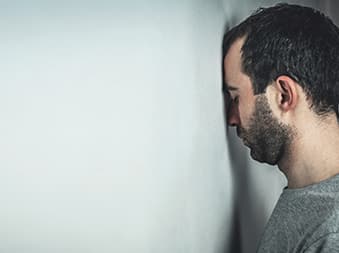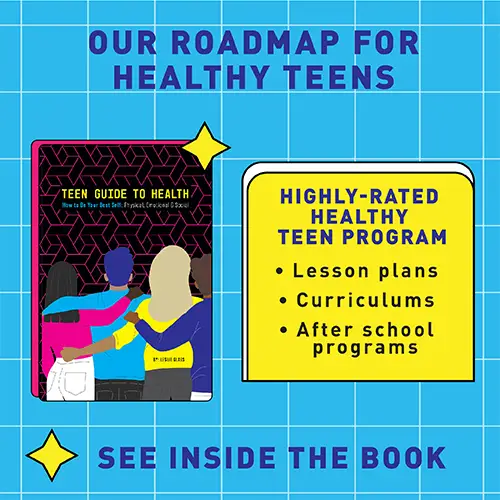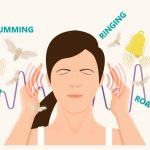Mood Disorders And Wondering If You Have One Can Be Confusing
Anyone can indeed get knocked off the beam because of stress or unexpected changes in their routine. Right now, you may feel you’ve lost your mojo due to any number of reasons. And that may be true. There are so many reasons to feel stressed not including personal dramas, professional issues, or just worrying about the state of the world. Traumas of all kinds can change us.
But, do you wonder if you have developed a mood disorder as a result of all the life changes and chaos? Do you feel hopeless and out of control almost all the time? A mood disorder can be unrelenting depression, sadness, grief, rollercoaster ups and downs, or other symptoms that don’t give relief and make life difficult, or impossible to manage. But you may have mood swings from hormonal changes that occur during the month. Those swings are not a mood disorder.
Your moods can also be affected by someone in your life who is a narcissist, or toxic family member. When people around you put you down constantly, your mood and feelings will be affected. Work and situations certainly affect your mood as well. Not everything that depresses or worries you is a mood disorder. Relationship problems need to be examined to see what’s really bothering you.
Mood Swings Don’t Always Mean You Have A Mood Disorder
When I was a young woman, I had mood changes every few hours. I could go from completely happy to deeply miserable in a nano-second. And it happened several times a day. Here’s an example: when I was author and a book got rejected or criticized by my editors, I would take to my bed and decide to kill myself. This is dramatic thinking, not real depression. I am a dramatic thinker, sometimes even a catastrophic thinker. “I’ll never be published again. The world is ending. I’ll never get another job,” are some thoughts that went through my head. Does this sound like you? I can still be like this but have better tools to get me back on
Here’s the difference between a mood disorder and a sadness or mood habit developed from one kind of brain reward. In my case, even though I swore I would never write again, I always got up the next morning and started again. Even on the night of my misery, after a few hours of feeling sorry for myself, I would realize it was dinner time and get up to make dinner for the family.
If I had been truly depressed, I would not have been able to switch from misery to purpose (like dinner for my family or the drive to ultimately succeed). My mood swings had to do with my hormones and a not-great ability to regulate or express my feelings. Did you know that when you express your feelings by journaling or telling someone, you can take their power away? You can have mood swings (and teens are famous for it) without having a mood disorder.
What Is A Mood Disorder
Being moody is not a mood disorder. Unresolved grief affects mood and keeps people stuck. Negative feelings and moods can become habits. Truly. Health professionals describe depression and bipolar disorders as “mood disorders.”
These are the most common types of mood disorders from Johns Hopkins
- Major depression. Having less interest in usual activities, feeling sad or hopeless, and other symptoms for at least 2 weeks may indicate depression.
- Dysthymia. This is a chronic, low-grade, depressed, or irritable mood that lasts for at least 2 years.
- Bipolar disorder. This is a condition in which a person has periods of depression alternating with periods of mania or elevated mood.
- Mood disorder related to another health condition. Many medical illnesses (including cancer, injuries, infections, and chronic illnesses) can trigger symptoms of depression.
- Substance-induced mood disorder. Symptoms of depression are due to the effects of medicine, drug abuse, alcoholism, exposure to toxins, or other forms of treatment.
Anxiety Is Not A Mood Disorder
Did you know that anxiety is not considered a type of mood disorder? In fact, anxiety is perceived to entail its own category of mental disorder types, containing its own broad range of disorders according to the Diagnostic and Statistical Manual of Mental Health Disorders (DSM-5).Apr 6, 2020
What Causes A Mood Disorder
Many factors contribute to mood disorders. Mood and affective disorders are commonly caused by an imbalance of brain chemicals, but there are many other triggers and reasons as well. You can develop depression from abuse or trauma. Life events (such as stressful life changes) may also contribute to a depressed mood. Mood disorders also tend to run in families, so it’s important to share the metal health history of your family tree.
Who Is At Risk For Mood Disorders
Anyone can feel sad or depressed at times. However, mood disorders are more intense and harder to manage than normal feelings of sadness. Children, teens, or adults who have a parent with a mood disorder have a greater chance of also having a mood disorder. However, life events and stress can expose or worsen feelings of sadness or depression.
What Causes Mood Changes
Events like the Pandemic, isolation from friends and family, and other traumas can trigger depression. Being fired from a job, getting divorced, losing a loved one, death in the family, and financial trouble, to name a few, all can be difficult for those who haven’t developed coping skills. These life events and stress can bring on feelings of sadness or depression or make a mood disorder harder to manage. There are ways to learn self-regulation.
Teens May Be At Higher Risk For A Mood Disorder And Suicide
It’s vital to encourage teens to talk about their feelings because feelings are experienced much more intensely in teens. When they feel there’s no way out, teens don’t have the tools to recover their perspective alone. Be sure you have a counselor or therapist who can work with your teen if there are signs of a mood disorder like persistent depression.
Women Are More At Risk Than Men
Did you know that the risk of depression in women is nearly twice as high as it is for men? Furthermore, once a person in the family has this diagnosis, their brothers, sisters, or children have a higher chance of the same diagnosis. In addition, relatives of people with depression are also at increased risk for bipolar disorder.
Children, teens, and adults can have mood disorders. However, children and teens don’t always have the same symptoms as adults. It’s harder to diagnose mood disorders in children because they aren’t always able to express how they feel.
Common Symptoms Of A Mood Disorder
Depending on age and the type of mood disorder, a person may have different symptoms of depression. The following are the most common symptoms of a mood disorder:
- Ongoing sad, anxious, or “empty” mood
- Feeling hopeless or helpless
- Having low self-esteem
- Feeling inadequate or worthless
- Excessive guilt
- Repeating thoughts of death or suicide, wishing to die, or attempting suicide (Note: People with this symptom should get treatment right away!)
- Loss of interest in usual activities or activities that were once enjoyed, including sex
- Relationship problems
- Trouble sleeping or sleeping too much
- Changes in appetite and/or weight
- Decreased energy
- Trouble concentrating
- A decrease in the ability to make decisions
- Frequent physical complaints (for example, headache, stomachache, or tiredness) that don’t get better with treatment
- Running away or threats of running away from home
- Very sensitive to failure or rejection
- Irritability, hostility, or aggression
In mood disorders, these feelings are more intense than those you may normally feel from time to time. These intense feelings of anxiety or sadness can interfere with your interest in family, friends, community, or work. You may lose interest in bathing, eating or taking care of yourself. Anyone who expresses thoughts of suicide should get medical help right away.
How Are Mood Disorders Treated
Mood disorders can often be treated with success. Treatments often include:
- Antidepressant and mood-stabilizing medicines combined with psychotherapy have been shown to work very well in the treatment of depression.
- Psychotherapy most often cognitive-behavioral and interpersonal therapy. This therapy is focused on changing the person’s distorted views of himself or herself and the environment around him or her. It also helps to improve interpersonal relationship skills, and identifying stressors in the environment and how to avoid them.
People With Mood Disorders Are At Risk For Addiction
Is someone you know self-medicating with drugs or alcohol? When you are depressed or have other mood disorders, you are more likely to use alcohol or substances to reduce your symptoms. Alcohol, however, is a depressant and doesn’t help improve mood. In fact, it can lead to many more mental health issues. If you or a loved one is having problems with substances or alcohol, a mood disorder may play a part. Be sure to get diagnosed to see what treatments are right for you. When correctly diagnosed and treated, people with mood disorders can live, stable, productive, healthy lives.
More Articles To Read
9 Common Mental Health Challenges
Chronic Pain Management: What’s Best





















